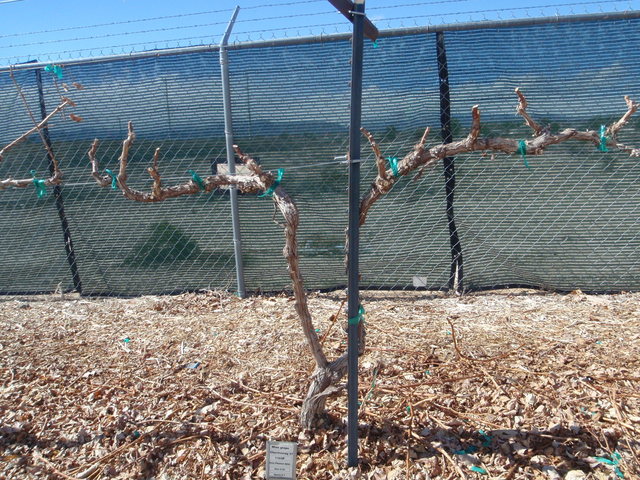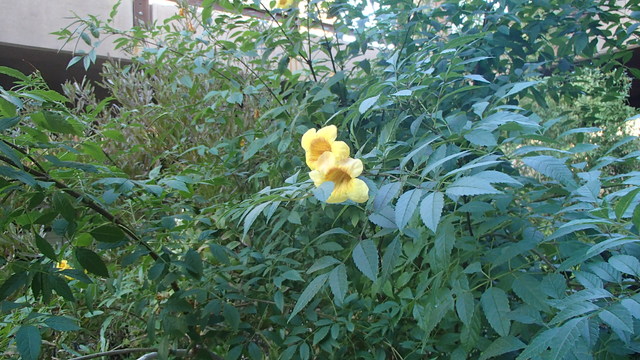It’s time to prune grapes, damaged citrus
Right now is the time to prune grapes. Prune citrus now if there has been damage from cold weather. If your citrus is young, prune it to tree form, removing side shoots to about the height of your knees. I delay pruning citrus and grapes until I am sure most of the cold weather has passed, which is mid- to late February.
Tomato, pepper and eggplant can be planted, but use hot caps or Wall O’ Water protectors or cover them with a frost blanket when night temperatures are expected below 40 degrees F because of chilling but not freezing temperatures.
You can still prune fruit trees and ornamental trees and shrubs with no problems. Apply dormant oil sprays before and after flowering but not during flowering. Spray the trunk and limbs.
Apply iron fertilizers to the soil now. The best fertilizers contain only EDDHA iron chelate in the ingredients. Others work best only if the soil is composted and very healthy.
Fertilize lawns now with half the fertilizer rates stated on the bag. The amount on the bag is usually too much and causes excessive growth and frequent mowing. Apply fertilizer four times a year.
Applying compost to lawns instead of mineral fertilizer results in a better and healthier lawn. Use a mulching mower. If you are bagging the clippings, it is not a mulching mower.
Q: My phlomis plants have leaves that have died, and some have yellow with brown tips. Should I cut it down in February? Should I increase the water? Do I just leave it alone? What causes the edge of the leaves to dry up?
A: Commonly, this plant is called Jerusalem sage. It grows like a weed in the Mediterranean region and has become somewhat of a pest in parts of England, where it escaped from gardens and became a weed.
Judging from the pictures you sent, the newest growth looks great. It’s some of the older growth that has yellowed or turned brown. Cut the plant back to the ground, just like you would lantana, and let it grow again. It will.
Even though it has started to grow, you can do it now. Next year, cut it back in January just before it starts to grow. Apply compost to the top of the soil around it in a 12-inch ring, 1 inch deep, to improve growth, color and flowering. If it’s growing in rock, apply compost on top of the rock and wash it in with a hose.
If a plant is going to be a weed, it might as well be pretty and taste good. This is both. Most people grow it as an ornamental because of its yellow flowers.
But it’s in the same family of plants as mint and basil, so it smells and tastes good. Use the leaves as a substitute for common sage. Pull off fresh leaves, let them dry, put them in a plastic bag for storage and crush them directly when preparing stuffing or cooking meat.
Our climate is not Mediterranean, and our soils are worse than Mediterranean soils. Grow Jerusalem sage as you would any other perennial vegetable or herb in our desert climate and soils. Do not plant in locations where there are intense temperatures, and mix compost into the soil at the time of planting in a ratio of 1 to 1.
My guess is the damage to the leaves is old, from winter cold temperatures and some watering problems perhaps. Avoid growing it on the south and west sides in intense hot locations. Water and fertilize as you would any other perennial vegetable or herb. Pinch new growth for a fuller canopy, and harvest young leaves for more intense flavor and aroma.
Q: My Meyer lemon tree has blossoms on it now. The blossoms appeared in January, and I need to do some trimming. Is it normal for them to blossom so early in the year? Should I trim it now or wait? Should I keep the blossoms or trim them off?
A: Blossoms normally appear on Meyer lemon trees this time of year. They always begin blooming during January and February. One of the main reasons for them not to have fruit is because of freezing temperatures after they bloom in late winter.
Keep your trimming or pruning to a minimum, but do it now. Citrus does not require a lot of pruning, and it should be avoided unless you see a problem. Prune them to a tree form when they’re young. Remove a crossing branch or a broken branch, and that’s about it.
Q: I want to plant some cherry-plum varieties of fruit trees that I understand grew well at the University of Nevada Cooperative Extension orchard in North Las Vegas. But I can only get them on Citation rootstock. Will this be OK, or should I pass until I can get them on a different rootstock?
A: Many types of fruit trees are grafted to another type of tree and not grown on their own roots. This “other type of tree” provides the roots for a tree that we buy because of its delicious fruit. Grafted fruit trees provide a variety of benefits.
The Citation variety of rootstock is a cross between a plum and a peach. Citation rootstocks performed very well when grown in amended desert soils at the university orchard in North Las Vegas. I would use it unless you have some very unusual or difficult soils.
These special roots, called rootstocks, give the tree advantages in some situations. The tree providing the roots is attached to the tree providing fruit by budding or grafting when very young. All cherry and plum types purchased from nurseries and garden centers are grown using special rootstocks.
Q: Can you tell me the care and fertilizing of Tecoma stans, aka yellow bells? Mine are looking rather shabby, with leaves dropping and lots of what looks like seed pods dangling from branches. What action should I take at this time to invigorate the plant? Any certain fertilizer that I should be using?
A: I am a proponent of organic type fertilizers, such as quality compost, but you can use a mineral fertilizer like 16-16-16 or 10-5-5 if you like. These mineral fertilizers have a large quantity of some major nutrients but are missing many of the others.
If your landscape or garden soil is relatively new, mineral fertilizers usually work OK. But in older soils, these mineral fertilizers might not provide all the nutrients plants need.
If using compost, apply ½ cubic foot of compost per plant if they are 1 to 2 years old. Use 1 cubic foot if they are 3 to 5 years old. Use 2 cubic feet if they are older and bigger. When using mineral fertilizers, the amount to apply depends on the type of fertilizer, but it should say how much on the bag.
Yellow bells can grow to more than 15 feet tall, but you can keep them 6 to 10 feet by correct pruning with no problems. Remember, prune from the bottom to control height, not the top of the plant. And don’t use hedge shears.
If you prune it incorrectly, this may remove all the spring flowers. If not sure, prune after they finish blooming this spring. They should flower again in the fall.
Remove seed pods as soon as they appear. This won’t hurt the plant at all. Fertilize them now with mineral fertilizer and again just before they bloom in the fall.
Apply compost once a year. Do it now. If you have a large rock, apply compost on top of the rock and water it in with a hose. In my opinion, compost gives better results.
Bob Morris is a horticulture expert living in Las Vegas and professor emeritus for the University of Nevada. Visit his blog at xtremehorticulture.blogspot.com. Send questions to Extremehort@aol.com.























